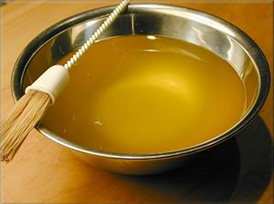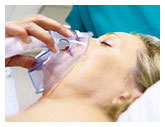Ayurveda: healthy mind in healthy body
 Alternative medicine is gaining more and more adherents. Recent scientific studies confirm that treatment without drugs is possible, and the wonders of traditional medicine have received their logical explanation. Ayurveda occupies a special place among non-traditional methods. “Science of life”, namely, Ayurveda is translated in this way, originates in India and today it is the oldest teaching about healthy lifestyle. Its goal is to bring a person’s body and soul into a healthy state, while taking care of health and its maintenance is no less important than the treatment of diseases.
Alternative medicine is gaining more and more adherents. Recent scientific studies confirm that treatment without drugs is possible, and the wonders of traditional medicine have received their logical explanation. Ayurveda occupies a special place among non-traditional methods. “Science of life”, namely, Ayurveda is translated in this way, originates in India and today it is the oldest teaching about healthy lifestyle. Its goal is to bring a person’s body and soul into a healthy state, while taking care of health and its maintenance is no less important than the treatment of diseases.
The teachings of Ayurveda originated about five thousand years ago in the Vedic culture of India, and its treatises influenced the development of Chinese and Egyptian medicine. Ayurveda is very closely associated with yoga and regards man as the unity of body and soul, in which all processes are interconnected. The goal of the ancient Indian teachings is to activate the self-healing forces of the body, and natural products from plants and minerals, balanced nutrition, exercise, breathing techniques, as well as color, sound and aromatherapy, help a person with this. In Western medicine, treatment involves a quick relief from the symptoms of existing diseases, while in Ayurveda the emphasis is on maintaining health throughout life.
Any treatment, even unconventional, begins with a diagnosis, only Ayurveda doctors do not scroll through the hospital card, but examine the eyes, tongue and even … the state of the stool and urine. The purpose of such a physical examination is to determine the psycho-physiological condition of the patient. Ayurveda identifies three basic states or principles (doshas), which are interrelated and regulate various functions of the human body and soul – Vata, Pitt and Kapha (Kapha). Kafa is responsible for the structure and organs of the upper body, Vata controls the system below the navel, and Pitt controls the diaphragm and navel. Vata represents movement, Pitta represents energy, Kapha represents structure. The imbalance in Dosha leads to the appearance of diseases, and this is what the Ayurveda doctor reveals during diagnosis. The specialist will be told a lot about the features of your sleep, appetite, mood, etc. In addition to therapy, the patient also receives advice on nutrition and lifestyle, which are designed to harmonize body and soul.
In a person, this or that Dosh dominates, and sometimes two of them simultaneously. We offer you the main characteristics of Dosh-types, maybe you can easily recognize yourself in one of them:
Vata type
Vata refers to movement and fluidity and, accordingly, is responsible for all movement processes in the body: it controls the nervous system, blood circulation, respiration, excretion processes and mental activity.
Vata type decals: light bones, thinness, grace, dry skin, underdeveloped muscles, prominent veins, prominent bones and joints. People of this type are nervous and restless, they get tired quickly, are sensitive to cold, have a changeable nature and are prone to an irregular lifestyle. They can be called talkative (in the positive sense of the word), these are creative natures who love to travel. Vata type has a tendency to vegetative disturbances (sleep disorders), diseases of the musculoskeletal system (arthrosis, etc.) and digestive problems (constipation, bloating).
Recommendations: follow the daily routine and regular meals, rest and relax more often. Vata type is useful hot drinks (tea) and regular massages using oils. In the diet should be avoided cold, heavy for digestion and intumescent food (cabbage, paprika, mushrooms, raw plant foods).
Type of pete
Pitta is responsible for the body’s metabolic processes and regulates digestion, energy metabolism and metabolism, as well as intelligence and emotions.
Distinguishing marks of the Pitt type: medium build, sensitive skin prone to redness, well-developed muscles. Such people are good organizers, always critical and very demanding of themselves and others, prone to idealism. They are subject to sharp bouts of hunger and thirst, have a good metabolism, but are very sensitive to chemicals. Tipu Pitt is peculiar to ambition, impatience and irascibility. Predisposed to skin diseases (psoriasis, acne), infectious diseases and increased acidity of the stomach.
Recommendations: all sour, spicy and fatty foods should be excluded from the diet, and instead, use refreshing, bitter and tart ones. Reduce to a minimum the use of alcohol, coffee, meat, wheat flour fine grinding. In the daily routine it is especially important to alternate work and rest.
Kafa Type
Kafa is responsible for the structure of tissues and fluid metabolism in the body, as well as for the body’s defenses.
Distinguishing signs of Kafa type: wide bone, a tendency to gain weight. This type is distinguished by a bright complexion, moist dense skin, strong (wavy) hair and strong nails. They are characterized by sluggish metabolism. Typical traits for Kafa are prudence, slowness, care, tolerance.





